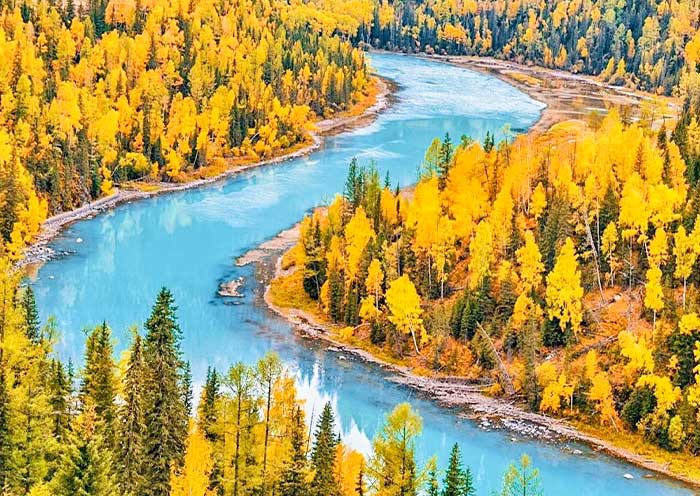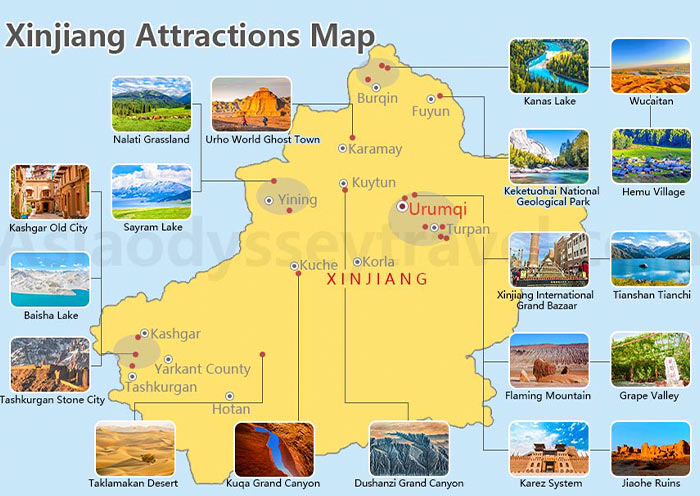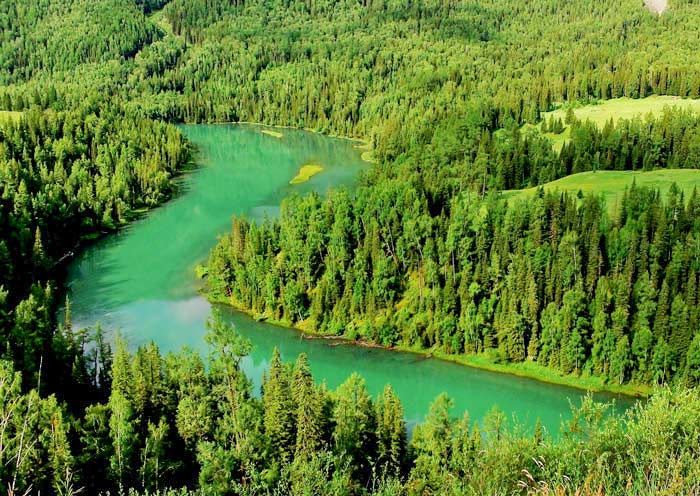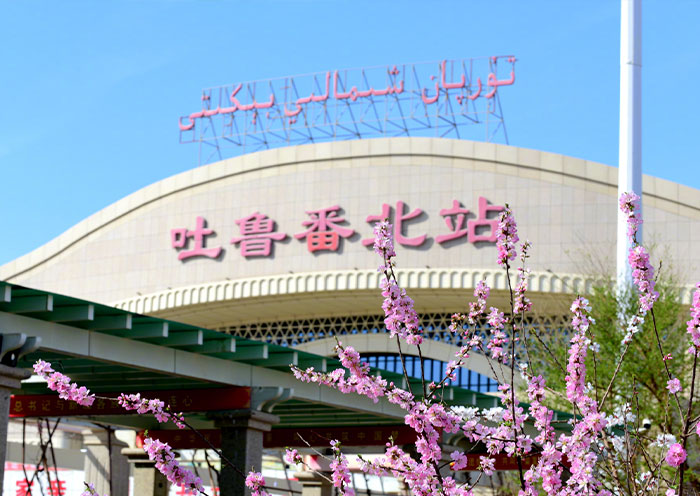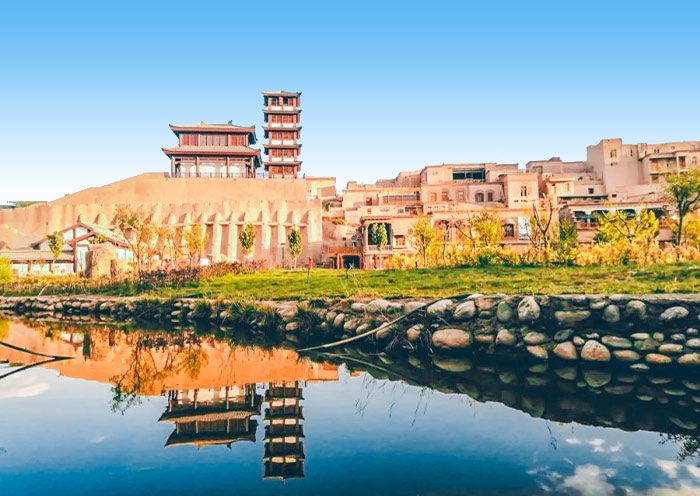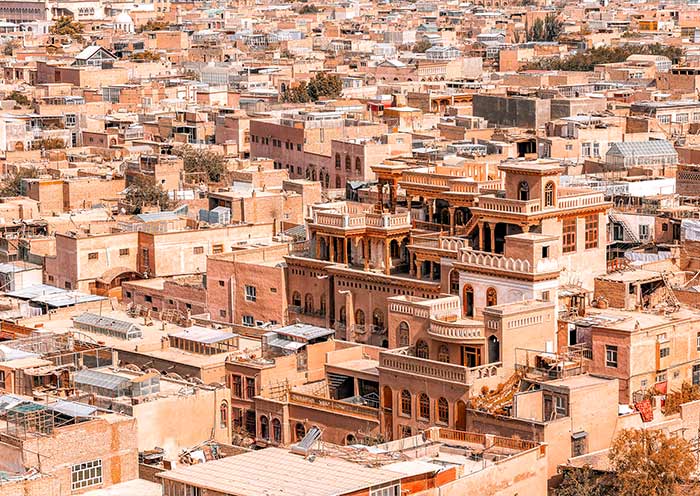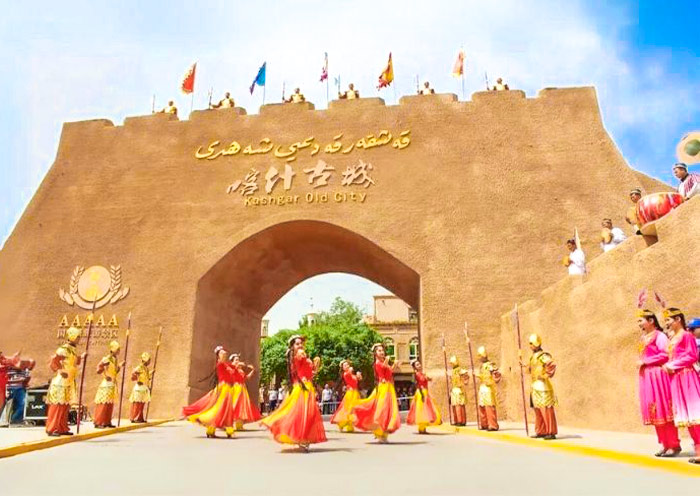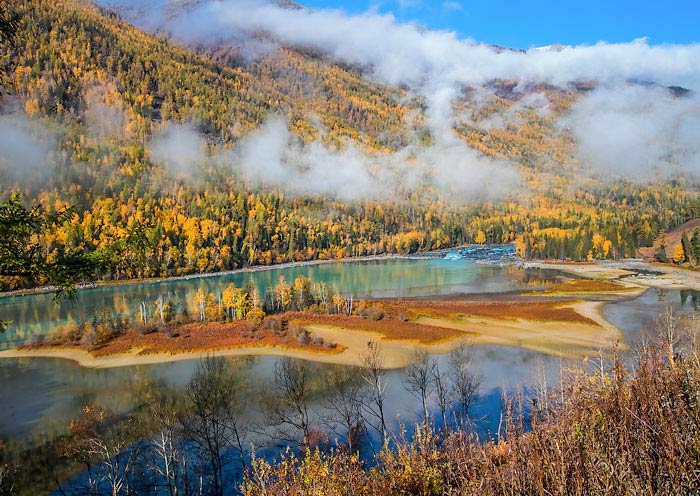What is Karez System
To put it simple Karez Water System is the man-made underground dating back 2,000 years ago in China.
The whole system of the Karez Water System is kind like a underground version of another great human ingenuity in China, the beautiful Rice Terraces in China, the Karez efficiently transport scarce water and provide water for desert residents.


Karez in Turpan: Best Preserved Water System in the World
Karez System in Turpan is one of the largest and most well-preserved Karez systems in the world, dating back over 2,000 years.
Turpan Karez Water System Facts
Location: Turpan Basin, Xinjiang, China.
History: The system was developed over 2,000 years ago for agricultural irrigation.
Number of Wells: Historically, more than 1,100 wells were part of the system. Around 614 wells are still in use
Number of Karez: Around 1,700 Karez exist today.
Length of Underground Water Tunnels: The length combined used to extend over 5,000 km (3,107 miles).
Annual Runoff Volume: The system provides about 300 million cubic meters of water annually.
To give you a more tangible idea the total length of the Turpan Karez tunnels, 5,000 km (3,107 miles), would be enough to stretch across the United States, from New York City to Los Angeles with a bit of extra!
Annual Runoff Volume of Turpan Karez Water System, 300 million cubic meters of water, is enough to fill about 120,000 Olympic-sized swimming pools!
Turpan Karez Water System History
The Turpan Karez Water System boasts a history dating back over 2,000 years. Developed during the Han Dynasty (202 BC – 220 AD), this Karez system was a lifeline for agriculture in the arid Turpan Basin.
Drawing inspiration from an ancient Persian irrigation technique, the local people adapted the Karez concept to suit the unique needs of Xinjiang region.
Recognized as one of the "Three Great Engineering Projects in Ancient China," alongside the Dujiangyan(都江堰) Irrigation System in Sichuan and the Grand Canal(京杭大运河), the Turpan Karez Water System stands as a testament to human ingenuity and resilience.
Also if you are history explorer the intricate connection between the Ancient Silk Road and Karez System is also a fascinating subject to dig into.
Turpan, as a major trading hub along the Silk Road, relied heavily on the Karez System for its water supply for centuries.
Countless travelers, including merchants, scholars, expediters, armies, lords, and even kings, were sustained by the life-giving waters of the Karez system.
Among those who may have quenched their thirst from the Karez wells were renowned figures like Marco Polo, Xuanzang(玄奘法师), and Zhang Qian(张骞).
That's why the Karez water system also stands as a key element on the historical tapestry, especially in the context of ancient Silk Road.
This remarkable feat of engineering has also captured the imagination of visitors worldwide, drawing them to marvel at its ingenuity and historical significance.
Why Was Turpan Water System Built
Why is Turpan's Karez Water System built? It was built to preserve and utilize the precious water, the origin of life.
Turpan is located in a vast, arid basin surrounded by mountains, creating a unique desert climate. Temperatures in Turpan can reach extreme highs during the summer, making it one of the hottest places on Earth.
Imagine you are a desert dweller thousands of years ago, the sun is constantly giving out scorching heat, and the air is just bond-dry. Any drop of water would evaporate the second it falls on the ground if not absorbed by the desert sand.
What would be the top priority for your daily life? Of course, water. That's why the Karez System was built—to help irrigate agricultural lands, provide water for drinking, and sustain local ecosystems in areas with scarce water resources.
The design of the Karez System is so ingenious that it prevents evaporation, efficiently transports water through the desert, and protects this precious resource from contamination or destruction during war.

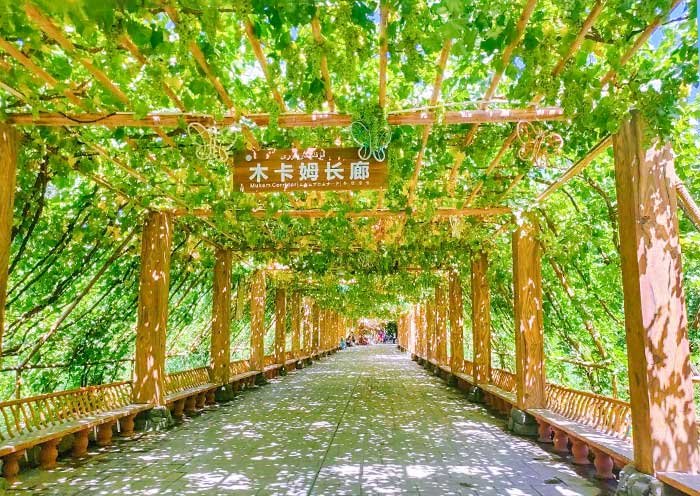
How Was Karez Water System Built
The Karez system is an ingenious underground irrigation water system. Each Karez can stretch from 3 to 5 kilometers (approximately 1.9 to 3.1 miles), with some reaching lengths of over 100 kilometers (62 miles).
These underground aqueducts of Karez System are comprised of a network of vertical shafts and horizontal tunnels that transport groundwater from the mountains to the arid plains.
Ancient engineers employed remarkably sophisticated techniques to construct these intricate systems.
For example, the soil excavated from the shafts is often piled up around the opening to form a mound.
The Mound of the Karez prevents sand and debris from falling back into the shaft and contaminating the water, and they also create a distinctive landscape feature.
According to Karez expert Chu Huaizhen, who studied the Karez systems in Turpan, ancient engineers used directional lamps, wooden rods, and a system of hand signals to ensure that the tunnels were dug in the correct direction.
These primitive tools and methods allowed them to complete these massive engineering projects with remarkable precision.


How Does Karez System Work
The Karez is a water system in Turpan features several key components that work together to efficiently transport water.
Vertical Shafts: These shafts are dug at regular intervals along the underground channel, allowing for ventilation, maintenance, and the removal of excavated materials.
Underground Channel: The Karez system includes a sloping underground channel designed to intercept groundwater, tapping into vital sources like aquifers or underground streams.
Mother Well: This is the main shaft where water emerges from the underground channel, serving as the focal point of the Karez system.
Distribution Channels: These channels carry water from the mother well to fields, villages, and other areas, ensuring that the water system effectively meets the needs of the community.
As water flows through the underground channel, gravity guides water from the higher elevation of the source to the lower elevation of the mother well.
The Karez system's intricate network of distribution channels then directs the water to various locations, sustaining life in arid regions.
Where to Visit This Turpan Water System: Karez System
On your Xinjiang Trip if you would like to visit Karez System Turpan would be the best destination.
Here are the attractions in Turpan to see the actual Karez Water System in Turpan:
1. Jiaohe Post Scenic Area—Source of Karez (交河驿·坎儿井源景区)
- Location: Approximately 12 km (7.5 miles) west of Turpan city center.
- Features:
- Home to the deepest Karez well in Turpan, with an elevator that descends to 60 meters.
- Educational exhibits on the Karez irrigation system.
- Scenic views of the surrounding landscape.
- Public Transportation:
- Buses from Turpan to Jiaohe can be taken, and taxi services are widely available.
The Jiaohe Post Scenic Area is a fascinating site that showcases the remarkable Karez irrigation system, which has been vital for agriculture in the arid Turpan region for centuries.
You can descend to impressive depths to explore the intricate underground water channels that have shaped the local landscape. The elevator ride to the bottom provides a thrilling experience as you learn about the engineering feats that make this system possible.
With informative displays and breathtaking views of the ancient city of Jiaohe, this Xinjiang Attractions is both educational and visually captivating.

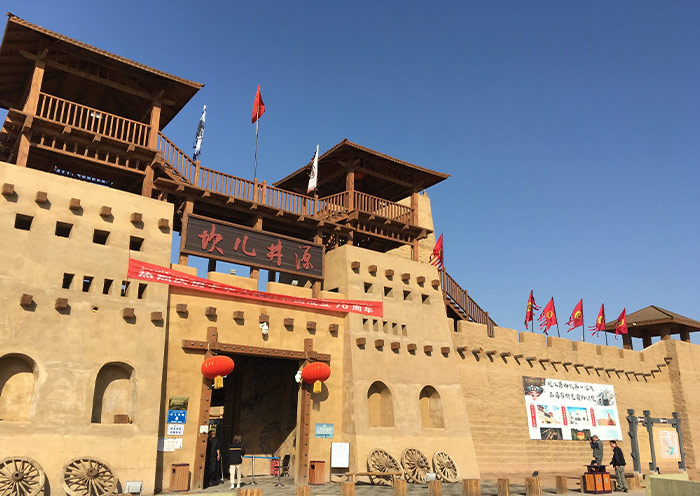
2. Karez Amusement Park (坎儿井乐园)
- Location: About 10 km (6.2 miles) northeast of Turpan city center.
- Features:
- Professional museum dedicated to the Karez system.
- First water education base in Xinjiang, with three Karez channels and the largest Aptuwa in Xinjiang.
- Public Transportation:
- Accessible via local buses that connect Turpan to the amusement park area. Taxis are also a convenient option.
Karez Amusement Park offers a unique blend of fun and education, making it an excellent destination for families. The park features a professional museum that dives into the history and operation of the Karez irrigation system, making complex topics accessible for all ages.
In addition to interactive exhibits, the park showcases the largest Aptuwa, a traditional water pot, crafted from copper. The flowing Karez channels throughout the park create a serene atmosphere, ideal for a leisurely stroll while learning about water conservation and the significance of the Karez system to the Turpan region's heritage.
3. Karez Well Folk Park (坎儿井民俗园)
- Location: Roughly 15 km (9.3 miles) southeast of Turpan city center.
- Features:
- Themed park with Uyghur-style guesthouses.
- Underground channels and vertical wells to explore.
- Authentic Xinjiang cuisine and cultural performances.
- Public Transportation:
- Local buses serve the area, and taxis can be hired for direct access.
Karez Well Folk Park immerses visitors in the rich cultural heritage of the Uyghur people while highlighting the significance of the Karez system. The park features charming traditional Uyghur courtyard-style guesthouses, offering a glimpse into local architecture and lifestyle.
Guests can wander through the park, exploring underground channels and vertical wells that form part of the Karez irrigation network. With opportunities to savor authentic Xinjiang dishes and enjoy traditional dances, this attraction provides a holistic experience that combines culture, history, and culinary delights.
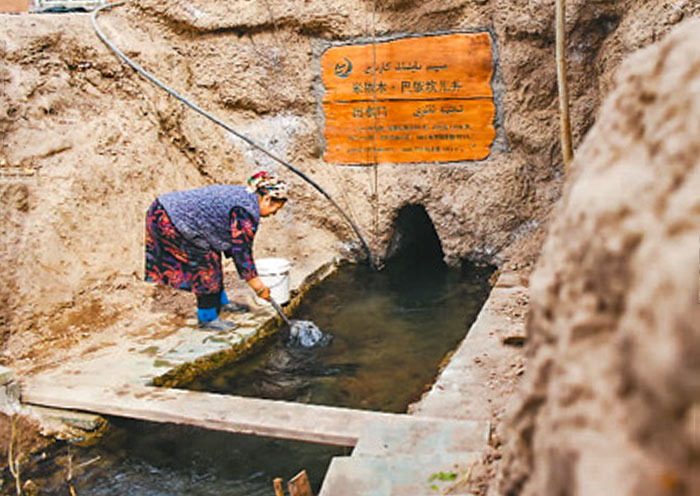
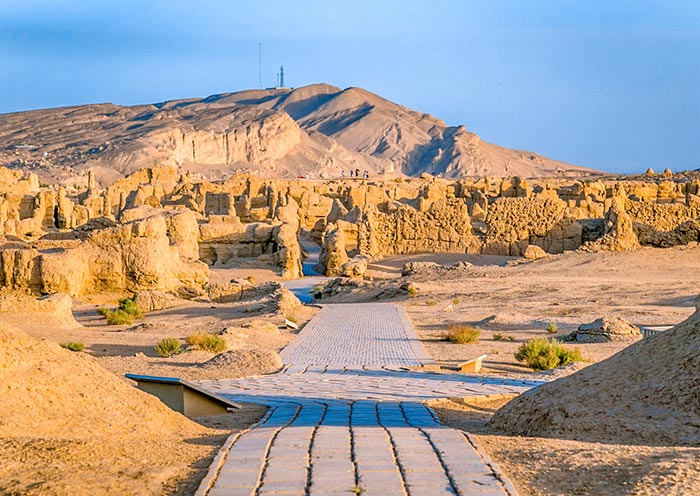
4. Karez Heritage Area (坎儿井传承区)
- Location: Approximately 12 km (7.5 miles) northwest of Turpan, near the Jiaohe ruins.
- Features:
- Forest belt planted to combat sandstorms.
- Walking paths and areas for relaxation.
- Educational information on the Karez system's role in agriculture.
- Public Transportation:
- Accessible by local bus from Turpan. Taxis can also be hired for a more direct route.
The Karez Heritage Area serves as a testament to the ongoing efforts to preserve both the environment and the cultural legacy of the Karez irrigation system. The area features a well-maintained forest belt, planted in the 1960s to mitigate the effects of sandstorms, showcasing the Turpan local community's commitment to environmental stewardship.
You can enjoy serene walking paths surrounded by greenery while learning about the Karez system's critical role in agriculture and water management. This tranquil area is perfect for a peaceful retreat from the bustling tourist spots, allowing visitors to reflect on the intricate relationship between nature and human ingenuity.
Travel Ideas for Xinjiang Tour
Urumqi (1-2 days): Start your journey in Urumqi. Visit the Xinjiang Regional Museum and explore the Grand Bazaar. Consider a day trip to the scenic Heavenly Lake for hiking and relaxation.
Kashgar & Tashkurgan (3-4 days): Explore the Old Town, dazzling Bazaars. Take a day trip to Tashkurgan to see the stunning scenery of the Pamir Plateau and visit Tajik family.
Turpan & Korla (2-3 days): Travel to Turpan, famous for its unique desert landscape and historical sites like the Karez irrigation system and the Flaming Mountains. Then, head to Korla to explore the ancient Iron Gate Pass and enjoy local Xinjiang Food.
Kuqa & Hotan (2-3 days): Next, visit Kuqa to explore the Kizil Caves and local culture. Continue to Hotan, known for jade, silk production and the ancient ruins of the Hotan Kingdom.
Aletai, Hemu Village & Kanas Lake (3-4 days): Venture north to Aletai, where you can explore picturesque valleys and enjoy outdoor activities. Visit Hemu Village for rural experiences, and head to Kanas Lake for breathtaking sunrise/sunset views.
Burqin & Karamay (2 days): Visit Burqin to see the Rainbow Mountains and enjoy outdoor activities. Then, explore Karamay, known for its unique geological formations and the Ghost City.
Yining & Naraty Grassland (2-3 days): Travel to Yining, explore local markets and attractions. visit Naraty Grassland for horseback riding and a taste of pastoral culture.
When planning your Xinjiang Itinerary, do consider how vast Xinjiang is as a travel destination. So allocate your time to maximize your Xinjiang Trip.
Browse more Xinjiang tours with Asia Odyssey Travel or simply get in touch with your Travel Expert; tell us your travel interest, we have you covered. Contact us now!
Travel with Asia Odyssey Travel, Culture & Nature Xinjiang Tour


First-time visitor or not, Xinjiang is Not What You Think. It's More Than What You Imagine!
Looking for natural grandeur? Experience the the sunrise at pristine Kanas Lake, the sky-touching Naraty Grassland, the boundless Taklamakan Desert along the acient Xinjiang Silk Road.
Looking to broaden your horizons? Discover exquisite Uyghur crafts at the bazaars at Kashgar, the nomadic dances of Tajiks on the Pamir Plateau at Tashkurgan, and the finest vineyards at Grape Valley at Turpan. You can even visit the oldest Buddha Grottoes in China!
Your Xinjiang Trip will be an eye-opening adventure and a soul-touching journey!
Asia Odyssey Travel: Your Best Xinjiang Guide
- Genuine Service: Not just an agency—we are your travel companions.
- Exclusive Access: Secure your tickets and accommodations even in high season.
- Authentic Experience: Best local guides with cultural insights.
- Travel Made Easy: Flights, hotels, activities—all taken care of!
- Skip the Tourist Routine: Avoid all tourist traps and travel down to earth
- 24/7 Support: Always on-line for your peace of mind
Asia Odyssey Travel, leading your China Adventure Since 2010. What's your travel idea? Let's talk!

